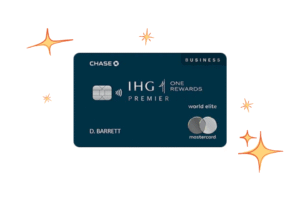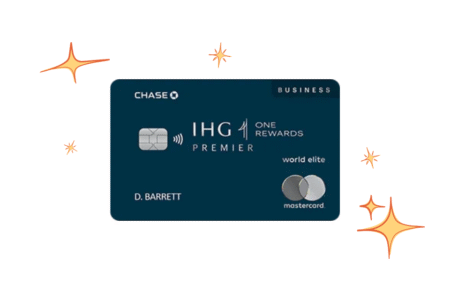If you’ve had no tickets or car accidents in the last several years, congratulations! By most insurance company standards, you’re a good driver.
But accidents can happen to anybody, so even with a squeaky-clean record, car insurance is still a must. As a good driver, you have an advantage because insurers reward customers like you with lower rates. Still, prices vary by company, so it’s smart to shop around and compare quotes.
Learn more: How does car insurance work? The basics explained.
Insurance companies generally define a good driver as someone with no at-fault accidents or moving violations on their record for the last three to five years. The precise definitions vary by company and state.
Below are some of the cheapest car insurance rates for drivers with a clean record.
Learn more: Cheapest car insurance in the U.S.
Car insurance is cheaper for good drivers because insurers calculate they’re less likely to cause accidents and file claims than drivers with recent tickets and accidents.
Maintaining enough coverage is essential regardless of how well you drive. After all, you can’t control others on the road or prevent damaging events like storms or natural disasters.
Most states require at least a minimum amount of liability insurance, which covers damage and injuries you cause others in an accident. Other types of insurance cover you, your passengers, and your vehicle. Here’s a more detailed look at the main types of coverage:
Liability insurance covers damage and injuries you cause others in an accident, as well as legal fees if you’re sued. Bodily injury liability covers injuries of other drivers and their passengers, and property damage liability pays to repair or replace others’ property when you’re at fault for an accident.
Collision insurance covers your car if it’s damaged in a crash with another vehicle or object, such as a pole.
Comprehensive insurance covers your car if it’s stolen or damaged by vandalism, fire, a storm, collision with an animal, or some other event.
Medical payments (Medpay) covers your medical expenses and, in some states, those of your passengers after an accident, regardless of who was at fault. The coverage also pays for funeral expenses after a fatal accident.
Personal injury protection (PIP) pays for your medical expenses and, in some states, those of your passengers after an accident, no matter who was at fault. PIP is required in some states, but an option or unavailable in others.
Uninsured motorist/underinsured motorist kicks in if another driver causes an accident and doesn’t have any or enough insurance. Uninsured/underinsured motorist bodily injury insurance covers your medical expenses, and uninsured/underinsured property damage insurance pays for repairs or replacement of your vehicle.
Insurance companies typically offer an automatic discount for having a clean driving record, but usually don’t specify the amount online because the savings vary by policy and by state. Here’s a closer look at the requirements for good driver discounts from these car insurance companies:
-
American Family: The good driving discount is applied if you’ve had no accidents, violations, or claims within the last five years.
-
GEICO: A discount of up to 22% is applied on most coverages if you’ve been accident-free for at least one year.
-
Farmers: A discount is offered for any driver on the policy who has had zero at-fault accidents or traffic citations in the past three years. There is also a discount for households where no driver on the policy has had an at-fault accident in the past five years.
-
Liberty Mutual: Discounts are applied for having no claims or violations. The company’s website does not specify how long a driver must be claim- or violation-free to qualify.
-
Nationwide: Savings are available for drivers who have had no at-fault accidents and major violations for at least five years.
-
Progressive: Drivers with no tickets or accidents in the past year can save an average of 34%.
-
State Farm: New customers get a good driver discount if they’ve had no at-fault accidents or moving violations for three years.
-
Travelers: Drivers with no at-fault accidents, major comprehensive claims, or moving violations for the past three to five years earn a safe driver discount.
-
USAA: A safe driver discount is available for maintaining a good driving record for more than five years. Ask a company representative for details on the definition of a good driving record.
Insurers also promote safe driving discounts through their usage-based insurance programs. These programs track driving through an app, plug-in device, or the vehicle’s built-in telematics system. Your premium is based in part on when, how much, and how safely you drive.
The programs typically offer an initial discount for signing up. Further savings depend on your driving habits. State Farm’s Drive Safe & Save and USAA’s SafePilot programs, for example, both offer 10% off for enrolling and up to 30% in savings for safe driving.
Yes, you may need more financial protection than what your state mandates because state car insurance requirements are relatively low and limited in their coverage. For example, state minimums don’t include coverage for your car.
Buy at least your state’s minimum required insurance, and purchase additional coverage to meet your financial needs in case of an accident or other calamity. A rule of thumb is to buy full car insurance coverage, which includes collision and comprehensive insurance, if your car is worth more than a few thousand dollars or you’re still paying off a loan or lease. Buy enough liability coverage to protect your assets. Consider other options, such as roadside assistance and rental reimbursement coverage; they don’t cost much but can come in handy in an emergency.
Tim Manni edited this article.
Unless stated otherwise, the estimates above are provided by Savvy Insurance Solutions (“Savvy”). Savvy operates a marketplace for home and auto insurance, plus an agency licensed in all 50 states. Estimates are generated using Savvy’s in-house machine learning models based on over 3 million data points, and include more than 15 of the largest insurance companies in Savvy’s nationwide data set. This includes data from more than 2 million insurance accounts connected through Trellis Connect, an in-house technology allowing consumers to “link” their insurance accounts before searching for insurance, and tens of thousands of policies bound by Savvy’s own agents. It takes into account a myriad of factors to create predictions, such as:
-
Policyholder age
-
Number of vehicles
-
ZIP code
-
Vehicle age
-
Insurer
-
…and more
Savvy creates estimates by running models against multiple inputs to the parameters of interest. For instance, the “teen driver” estimates were created by adjusting the policyholder age input into the pricing model while keeping all other variables steady from the baseline for “full coverage.” The models enable hyper-personalized estimates that take into account a plethora of user attribute permutations (e.g., teen drivers in specific states, teen drivers with new vehicles, teen drivers in specific states with new vehicles) to provide individuals with a unique and tailored experience. The charts above are a subset of the kinds of personalization Savvy can do.
The following are definitions used by Savvy when providing its rate estimates for various types of coverage.
Full coverage car insurance: A policy with comprehensive, collision, and liability coverage
Average policyholder: A 48-year-old driver who owns a 13-year-old vehicle and lives in an average-income ZIP code
Senior driver: A 70-year-old policyholder with full coverage car insurance
Good driver: Drivers across all coverage types, vehicle types, and locations who have no tickets, accidents or DUIs
Read the full article here












